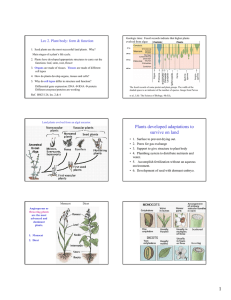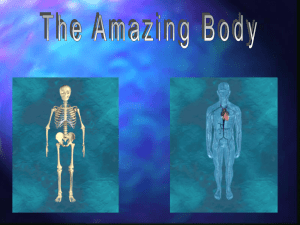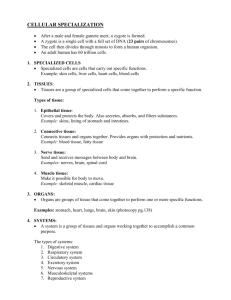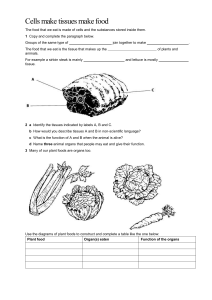Outline Lec 2: Plant body and functions
advertisement
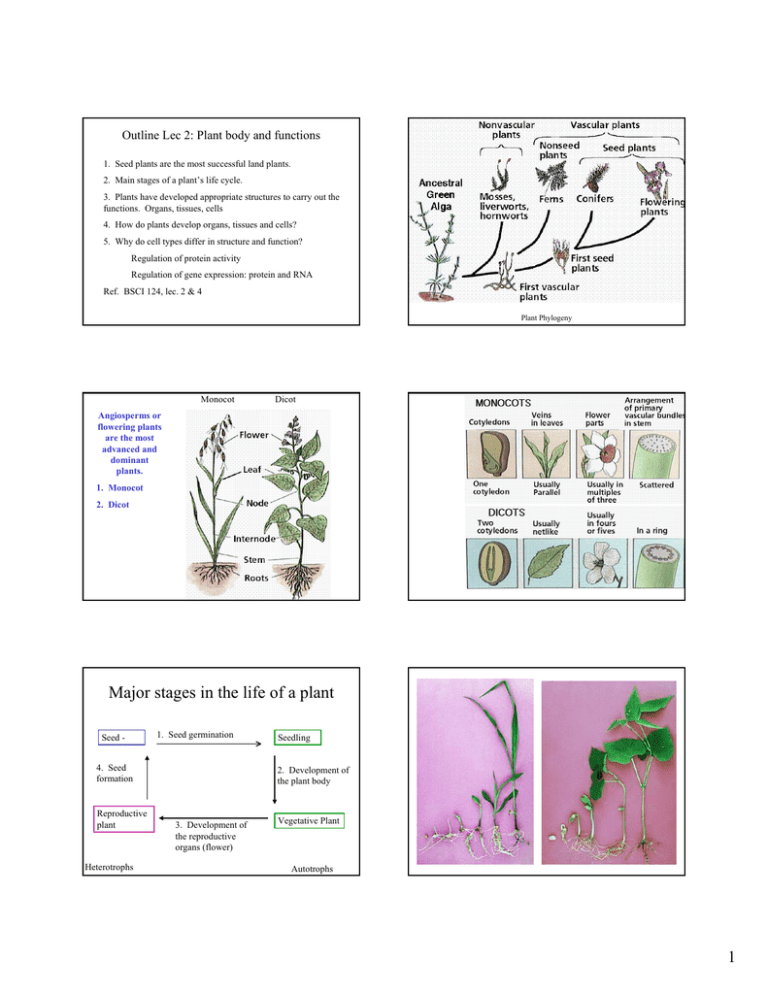
Outline Lec 2: Plant body and functions 1. Seed plants are the most successful land plants. 2. Main stages of a plant’s life cycle. 3. Plants have developed appropriate structures to carry out the functions. Organs, tissues, cells 4. How do plants develop organs, tissues and cells? 5. Why do cell types differ in structure and function? Regulation of protein activity Regulation of gene expression: protein and RNA Ref. BSCI 124, lec. 2 & 4 Plant Phylogeny Monocot Dicot Angiosperms or flowering plants are the most advanced and dominant plants. 1. Monocot 2. Dicot Major stages in the life of a plant Seed - 1. Seed germination 4. Seed formation Reproductive plant Heterotrophs Seedling 2. Development of the plant body 3. Development of the reproductive organs (flower) Vegetative Plant Autotrophs 1 Plants develop appropriate structures to carry out special functions. Veg plant body is made of 3 organs: leaf stem root Reproductive organs: Flower Fruit Reproductive Organs Fig. 1-2 Taiz Flower: produces egg and sperm promote pollination and fertilization 4 organs: sepals petals stamens pistils Fruit: protects embryo from harsh environment, protects embryo from animals promotes seed dispersion ? Difference between fruit and seed? 1. A plant body is made up of cells, tissues and organs. ORGANS: Veg. body is made up of three organs: leaf, stem root Reproductive organs are: flower fruit Tissues: Each organ is made of several tissues. 1. dermal 2. ground 3. vascular [4. Meristem] Cell types Cell types: A tissue consists of one or more cell types. 1. dermal tissue includes the epidermis, guard cell (leaf) 2. Ground tissue: includes cortex, mesophyll parenchyma 3. Vascular tissue includes xylem tracheids, phloem sieve tube, companion cells Cells are grouped in tissues and several tissues make up an organ. The ability of plants to grow and develop depends on the ability of individual cells to divide, differentiate and to carry out their intended functions. 2 3 How do plants develop organs & cell types? Plants development is characterized by permanent embryogeny Unlike animals, plants can grow indefinitely at the growing tips. Fig. 5-8 Taiz Longitudinal Section of Root Growth and Development includes: Meristems: •Cell Division •Enlargement (or Elongation) •Shoot apical meristem --->leaf and stem •Differentiation (or specialization) ---> cell types •Root apical meristem --> root •Cambium ---> increase girth of stem Shoot apical meristem Floral apical meristem 16-13. Shoot apical meristem 4 1-4. Plant cell Why do cells differ in form and function? 1-10. Gene expression 5

